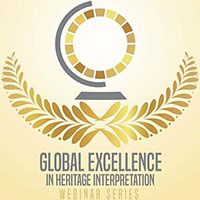The AIP conference sessions took place this year in Barcelona, focusing on the interesting and controversial issue of, ‘Heritage Interpretation in the app era’.
Various experts were there, discussing a range of topics.
Firstly, we saw how different applications are dominating, especially those designed for closed spaces, such as art museums, interpretation centres, castles and archaeological sites. The focus then turned to open spaces, especially natural areas.
Among the many applications used since they first appeared, we need to add video game technology and highly spectacular virtual reality techniques to things like mapping.
It appears that new technology could follow the principles of Tilden, albeit with some limitations to their use in open spaces and for flora and fauna.
The biggest advantages of apps are:
– easy access to information and applications to interact with the general public in real-time, without the need of materials (maps, labels, etc.);
– new generations, born and raised on apps, using them to interact with the language and knowledge;
– the enjoyment they bring to exhibitions and events once they are over, or to see more elusive perspectives and dimensions, such as, for example, the different layers of paint in a painting, internal structures of objects, the passing of time, or how something was done;
– supplementing a live experience in many way, such as, for example, showing an altarpiece or original construction that no longer exists.
However, it also reveals some limitations too:
– the need for good network connections throughout a visit, or easy downloads and the importance of being user-friendly;
– the difficulty to create a good app isn’t in the technology but ensuring they have good content. Many disappear quickly;
– being clear about how to show what makes something unique rather than just applying a standard method or technique;
– the limits of accessibility. Natural limitations exist for people with disabilities such as the blind of deaf, as well as for those with different abilities to understand the technology, or the content itself, such as the elderly;
– the need to assess if the tool (or app) is not the most important feature at the end of the experience, that the resources display and divert our attention only in terms of the technology used. This is especially relevant for a younger audience who has learned to use the technology.
The conference concluded with a field test in the Born Cultural Centre, where participants could test a new application and how suited it was in relation to the interpretive principles. It was an interesting meeting that opened up new perspectives on the use of technology in the world of interpretation.
Evarist March is Director of Naturalwalks, a company focusing on nature guiding in Catalonia and Spanish speaking countries East and West of the Atlantic. You can get in touch with him at info@naturalwalks.com.
To cite this article:
March, E. (2016) ‘World of apps at the 2016 AIP Conference’. In Interpret Europe Newsletter 1-2016, 15
Available online:
https://www.interpret-europe.net/fileadmin/Documents/publications/Newsletters/ie-newsletter_2016-1_spring.pdf




